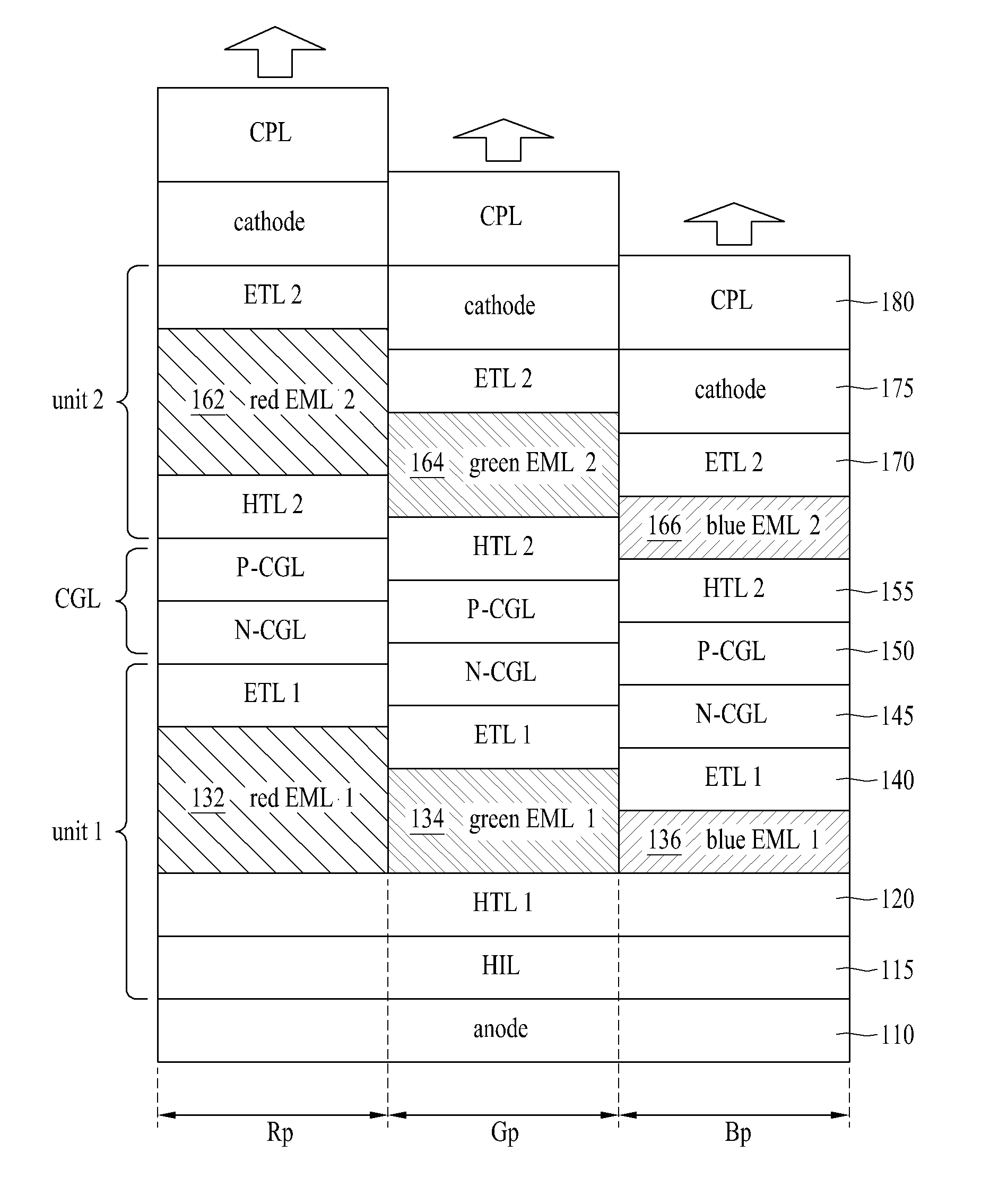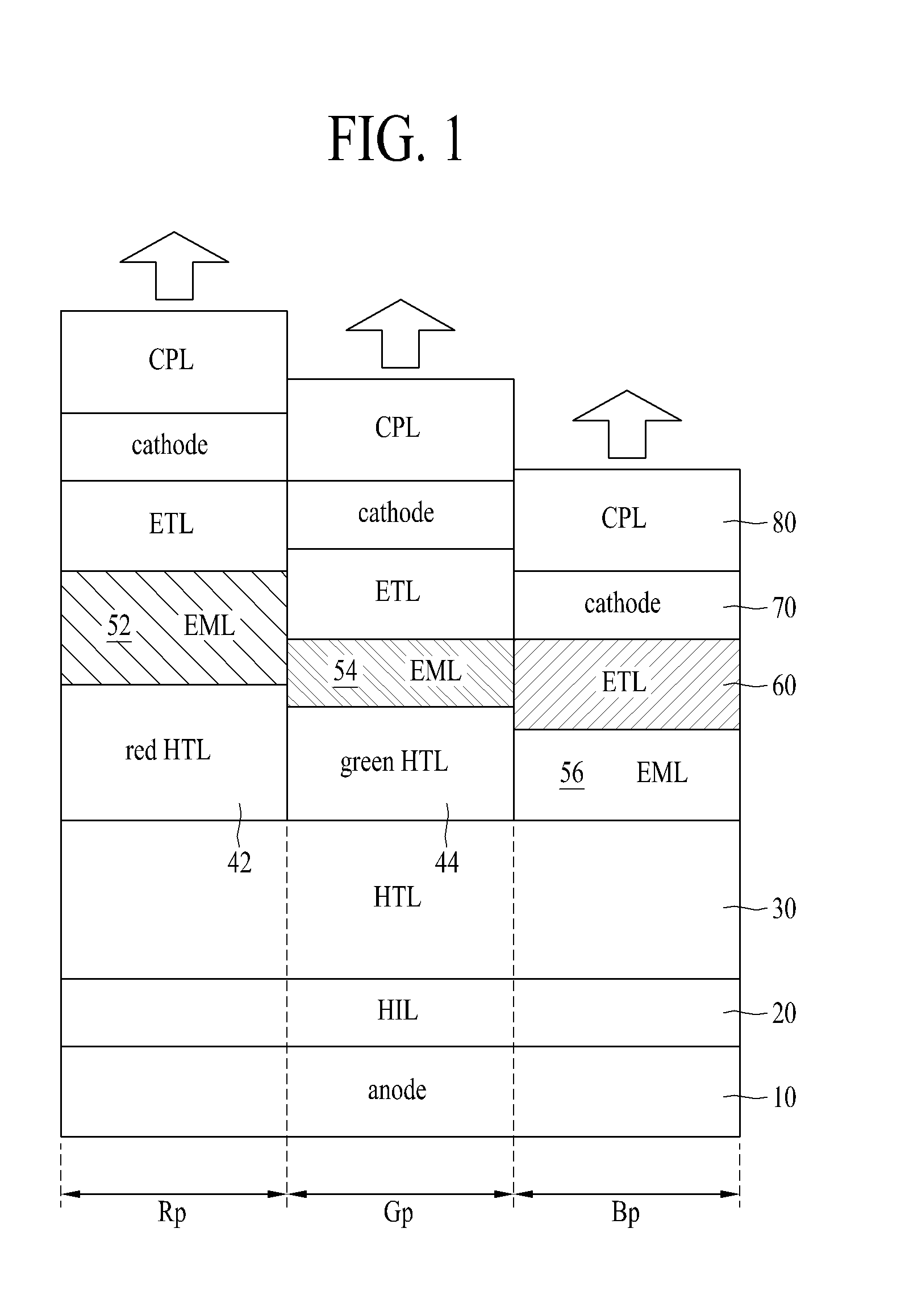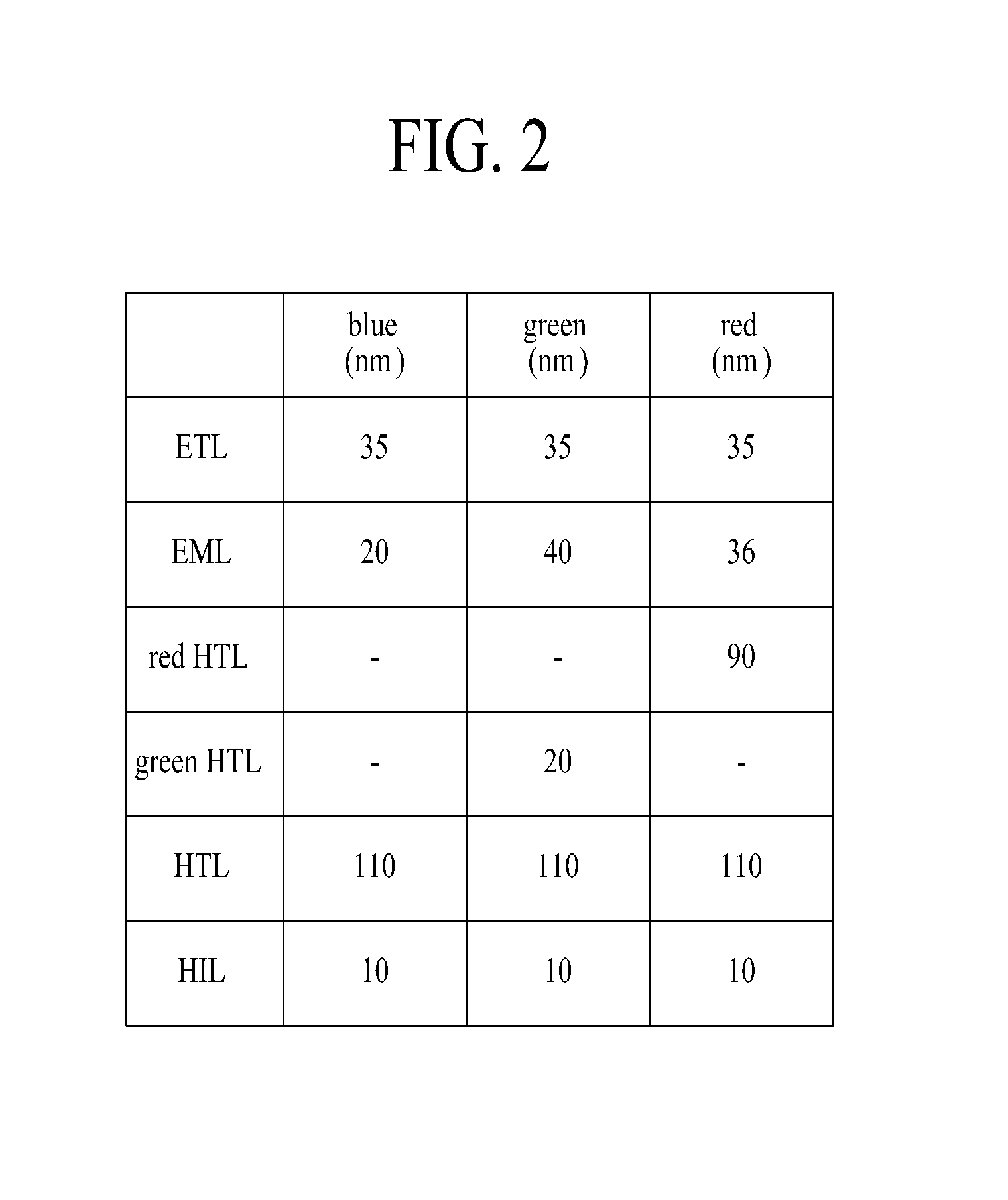Organic Light Emitting Device
a light-emitting device and organic technology, applied in the direction of solid-state devices, semiconductor devices, thermoelectric devices, etc., can solve the problems of reducing emission efficiency, consumption of consumption power, and limitations in brightness and contrast, and achieve enhanced emission efficiency, enhanced luminance, and enhanced service life
- Summary
- Abstract
- Description
- Claims
- Application Information
AI Technical Summary
Benefits of technology
Problems solved by technology
Method used
Image
Examples
first embodiment
Experiment Conditions of First Embodiment of the Present Invention
[0132]A first electrode (an anode electrode) 110 is a reflective electrode, and is formed in a structure where an ITO layer (a thickness: 70 Å), a reflective layer (APC, a thickness: 100 Å), and an ITO layer (a thickness: 70 Å) are stacked. In this case, the reflective layer (APC) is formed of an alloy which contains silver (Ag) by 90% or more.
[0133]The first electrode (the anode electrode) 110 is formed in units of one unit pixel. One unit pixel is composed of a red pixel, a green pixel, and a blue pixel of three colors, and the pixels of three colors are divided by a bank (not shown).
[0134]A hole injection layer (HIL) 115 is formed by depositing an HAT-CN material on the first electrode (the anode electrode) 110 to a thickness of 10 nm. A hole transport layer (HTL) 120 is formed by depositing NPD on the HIL 115 to a thickness of 37.5 nm.
[0135]A first red EML (red EML1) 132 is formed in a red pixel area Rp on a first...
PUM
 Login to View More
Login to View More Abstract
Description
Claims
Application Information
 Login to View More
Login to View More - R&D
- Intellectual Property
- Life Sciences
- Materials
- Tech Scout
- Unparalleled Data Quality
- Higher Quality Content
- 60% Fewer Hallucinations
Browse by: Latest US Patents, China's latest patents, Technical Efficacy Thesaurus, Application Domain, Technology Topic, Popular Technical Reports.
© 2025 PatSnap. All rights reserved.Legal|Privacy policy|Modern Slavery Act Transparency Statement|Sitemap|About US| Contact US: help@patsnap.com



